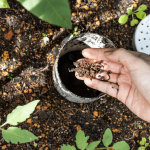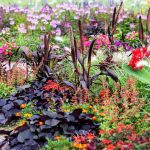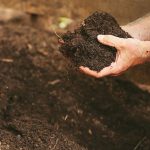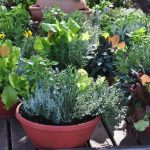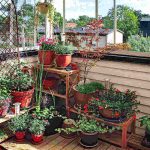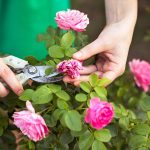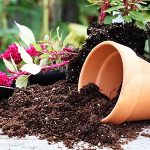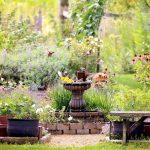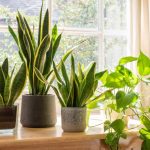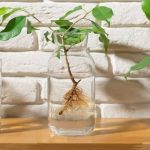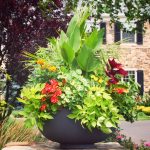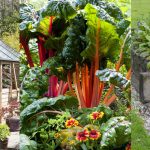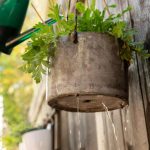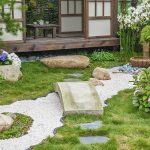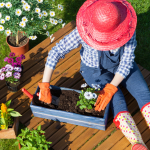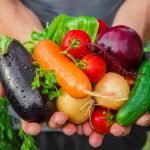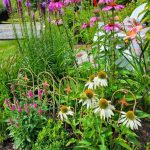Container gardening is a delightful way to bring the beauty of nature into even the smallest of spaces. However, like any gardening venture, it is not without its challenges. From struggling plants to pesky pests, container gardening can present a variety of common problems. But fear not, for with a little know-how and some simple solutions, you can keep your container garden thriving and flourishing. Let’s explore some of the most common problems with container gardening and discover how to solve them.

Dealing with Pests in Container Gardens
Pests can be a major headache for container gardeners, as they can wreak havoc on your plants if left unchecked. Here are some common problems you may encounter with pests in your container garden, along with some solutions to help you keep your plants healthy and thriving.
- Aphids: These tiny insects can suck the sap out of your plants, causing them to wilt and die. To get rid of aphids, try spraying your plants with a mixture of water and dish soap.
- Snails and slugs: These slimy creatures can munch on your plants, leaving behind holes and damage. To deter snails and slugs, try placing a barrier of crushed eggshells or diatomaceous earth around your containers.
- Spider mites: These tiny pests can cause leaves to become discolored and distorted. To control spider mites, try spraying your plants with a mix of water and neem oil.
By being vigilant and taking proactive measures to combat pests in your container garden, you can ensure that your plants remain healthy and pest-free.
Optimizing Drainage for Healthy Plants
Container gardening is a popular way for people to grow plants in limited spaces, but it can come with its own set of challenges. One common problem that many gardeners face is poor drainage in their containers. When containers do not have adequate drainage, the roots of plants can become waterlogged, leading to root rot and other issues.
To optimize drainage for healthy plants in container gardening, there are several solutions that can be implemented. One solution is to choose containers with drainage holes at the bottom. These holes allow excess water to drain out of the container, preventing water from pooling at the bottom. Additionally, adding a layer of rocks or pebbles at the bottom of the container can help improve drainage by creating space for water to flow through.
Another solution is to use a well-draining soil mix specifically designed for container gardening. These mixes typically contain ingredients like perlite, vermiculite, or sand, which can help excess water to drain more efficiently. It is also important to avoid overwatering plants in containers, as this can lead to waterlogged soil and poor drainage. By following these tips, gardeners can optimize drainage in their containers and promote healthier plants.
Choosing the Right Soil Mix for Container Gardening Success
When it comes to container gardening, one of the most important factors to consider is the soil mix you use. Choosing the right soil mix can make a big difference in the success of your plants. Here are some common problems with container gardening related to soil mix, and how you can solve them:
- Poor Drainage: One common issue with container gardening is poor drainage, which can lead to root rot and other problems. To solve this, make sure your soil mix is well-draining. You can add perlite or sand to improve drainage.
- Compacted Soil: Compacted soil can restrict root growth and hinder plant growth. To solve this issue, mix in some vermiculite or peat moss to improve soil structure and allow for better aeration.
- Nutrient Deficiency: If your plants are showing signs of nutrient deficiency, such as yellowing leaves or stunted growth, it could be due to poor soil quality. Consider adding some organic matter like compost or aged manure to enrich the soil and provide essential nutrients for your plants.
Preventing Overcrowding and Ensuring Adequate Space for Growth
One common problem with container gardening is plants becoming root-bound due to limited space for growth. This can hinder their development and lead to stunted growth and poor fruit production. To solve this issue, regularly check the root system of your plants and repot them into larger containers when necessary.
Another challenge is overcrowding, which can occur when multiple plants are placed too closely together in a container. This can cause competition for resources such as water, sunlight, and nutrients, resulting in stunted growth and increased susceptibility to pests and diseases. To prevent overcrowding, make sure to space out your plants adequately in their containers.
Additionally, poor drainage can lead to waterlogged soil, which can deprive plants of oxygen and cause root rot. To address this problem, ensure that your containers have sufficient drainage holes and use well-draining soil mixtures. You can also elevate your containers by placing them on pot feet or using pot saucers to improve air circulation.
- Root-bound plants: Regularly check root systems and repot when necessary.
- Overcrowding: Space out plants adequately in containers.
- Poor drainage: Ensure containers have drainage holes and use well-draining soil mixtures.
In conclusion, container gardening can be a rewarding and sustainable way to grow plants in small spaces. However, it comes with its own set of challenges. By being aware of common problems like overwatering, poor drainage, and limited root space, you can take proactive measures to ensure the health and vibrancy of your container garden. Implementing solutions such as using well-draining soil, proper watering techniques, and regular fertilization can help mitigate these issues and allow your plants to thrive. So don’t be discouraged by the occasional setback – with a little bit of knowledge and care, you can turn your container garden into a flourishing oasis of greenery. Happy gardening!


